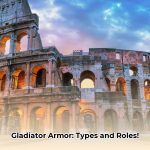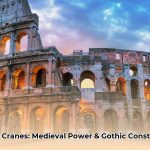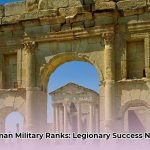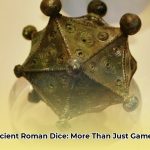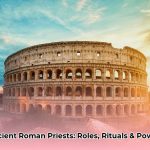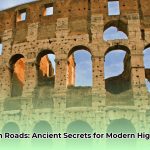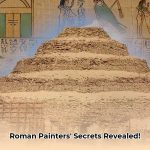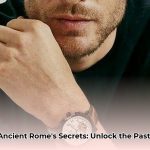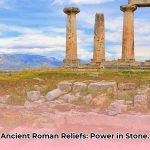Ever wondered what it was like to live in ancient Rome? Forget the gladiators for a moment and picture this: you are walking through a Roman town, and every building is alive with art. Walls are not just walls; they are vibrant canvases bursting with stories, intricate landscapes, and vivid scenes of daily life. This is the enduring power of Roman painting. While the Romans were undoubtedly inspired by the Greeks, they took that inspiration and ran with it, forging their own distinct and powerful artistic identity. This is not merely about beautiful pictures; it is about understanding how visual art fundamentally shaped Roman life, from the grandest imperial residences to the most modest homes. Want to see more? Explore Roman art. We are about to delve deep into the world of Roman painters, uncovering their techniques, exploring their myriad influences, and examining how their artistry continues to resonate even today. Prepare to see ancient Rome in a whole new light.
The Canvas of Rome: Evolving Styles and Themes
Roman painting, though drawing heavily from Greek, Etruscan, and even Egyptian artistry, ultimately developed its own unique voice and characteristics. Roman artists were not mere imitators; they thoughtfully adapted and innovated, placing a significant emphasis on detailed landscapes, seamlessly integrating art into the fabric of daily life, and cleverly adjusting styles to different locations and social contexts. While much of this fragile art has succumbed to the ravages of time, the pieces that remain offer invaluable insights into Roman society, their beliefs, and the groundbreaking artistic approaches they took. This ancient art has left a long-lasting influence that still echoes throughout art history today.
The Building Blocks of Roman Painting: What We Can Piece Together
Much of what we understand about the ancient Roman painter comes from the remarkably well-preserved frescoes discovered in sites like Pompeii and Herculaneum. These detailed snapshots reveal a society where art was not just for the elite; it was a common, pervasive form of wall painting, deeply embedded in public and private spaces alike. Roman artists explored an extensive range of topics, depicting everything from expansive natural landscapes and individual portraits to epic stories from classical mythology and intimate scenes from everyday life.
It is crucial to remember, however, that what survives today represents only a fraction of what once existed. The scarcity of intact Roman paintings makes reconstructing the full artistic landscape a complex challenge for art historians. Environmental factors such as volcanic eruptions, floods, and the inevitable passage of centuries, along with various historical events, have taken a heavy toll on these delicate artworks. Thus, art historians meticulously piece together a fragmented puzzle, relying on archaeological discoveries and invaluable hints gleaned from ancient literature to reconstruct the vibrant world of the ancient Roman painter.
The Four Pompeian Styles: A Chronicle of Artistic Evolution
The vast collection of wall paintings from Pompeii and nearby Herculaneum has allowed art historians to identify distinct chronological ‘styles’ or phases, offering a unique window into the evolution of Roman artistic expression from the 2nd century BCE until 79 CE.
- First Style (Incrustation Style, c. 200–80 BCE): This style primarily imitated expensive marble revetment by painting colorful blocks of plaster. It aimed to create an illusion of luxury materials, reflecting Hellenistic influence.
- Second Style (Architectural Style, c. 80 BCE–14 CE): Moving beyond simple imitation, artists began to create grand, illusionistic scenes that expanded the room into an imagined world. This often involved large mythological narratives, landscapes, or cityscapes depicted beyond painted architectural elements like columns or windows. This style dramatically demonstrated an advanced understanding of perspective.
- Third Style (Ornate Style, c. 14–60 CE): A shift towards delicacy and elegance, this style rejected the grand illusions of the Second Style. Walls were often painted in monochromatic fields, typically black, red, or white, with small, exquisite mythological scenes or vignettes placed centrally, framed by slender, whimsical ornaments.
- Fourth Style (Intricate Style, c. 60–79 CE): This final style before Vesuvius’s eruption combined elements of the previous three. It featured crowded compositions, architectural vistas, large central panels, and smaller, intricate details, often in vibrant, contrasting colors. It represented a flamboyant and eclectic culmination of Roman painting traditions.
These styles underscore the constant innovation and adaptability of Roman artists, demonstrating their sophisticated understanding of illusion, color, and narrative.
Masters Behind the Murals: Unveiling Roman Painters
Figuring out precisely which ancient Roman painter crafted a specific piece remains a tricky business. Historical records are often incomplete or entirely missing, leading to considerable ambiguity. Given the limited physical evidence, it is challenging to definitively attribute specific artistic innovations or techniques to individual artists. However, ancient sources and surviving epitaphs do illuminate the lives of a few notable figures, offering rare glimpses into the human element behind these monumental artworks.
- Gaius Fabius Pictor (Active c. 304 BCE): Considered among Rome’s earliest recorded painters, Fabius was born into the distinguished patrician Fabii family. He earned the cognomen “Pictor” (painter) for his work. Despite his noble birth, painting was often looked down upon as a profession during his era. His most famous work adorned the Temple of Salus, depicting scenes from the battle where Bubulcus gained victory over the Samnites. The temple, and thus his paintings, were tragically destroyed in a fire during Emperor Gaius’s reign.
- Famulus (also known as Amulius, 1st century CE): Famulus is one of the earliest artists in Europe with a surviving contemporary biography. He and his assistants were responsible for painting a significant portion of the Domus Aurea, Emperor Nero’s opulent palace in Rome. His frescoes, characterized by white walls, delicate swags, and friezes with framed figures or landscapes, profoundly influenced Renaissance artists, notably Raphael’s work in the Vatican loggias. This style, often referred to as “grotesque,” resurfaced again in Neoclassicism, establishing Famulus as one of the most impactful painters in art history.
- Iaia of Cyzicus (1st century BCE): A celebrated female painter and ivory engraver, Iaia was known for her speed and talent, reportedly surpassing her male contemporaries in both skill and earnings. Her paintings often centered on women, with a famous self-portrait and a depiction of an old woman. Historical accounts suggest she remained unmarried, with some speculation linking this to her rumored romantic interests in other women.
- Publius Aelius Fortunatus (2nd century CE): A former slave turned painter, Fortunatus’s story is rare and compelling. It was highly unusual for a slave to earn freedom and even rarer for a former slave to pursue a refined art like painting. His unique status, coupled with the extraordinary survival of some of his works, brought him fame. He is commemorated with a renowned epitaph in Rome.
- Pacuvius (c. 220–130 BCE): A multi-talented individual, Pacuvius was not only a renowned tragic poet but also a highly skilled painter. He was the nephew and pupil of Ennius, a significant figure who elevated tragic poetry to new heights. Pacuvius was described as a fine, simple man with a serious spirit. His plays were highly praised in the 1st century BCE, and it is believed he painted set designs for them, contributing to the elevated perception of painting as a profession through “the glory of the stage.” His most famous paintings adorned the Temple of Hercules in the Forum Boarium.
- Arellius (1st century BCE): Active before Emperor Augustus’s reign, Arellius was an exclusive painter of prominent Roman figures. Despite his high esteem, he faced criticism for his practice of incorporating the features of women he loved into the faces of the goddesses he painted. One notable critic was repulsed by the resemblance of the Roman goddesses in his paintings to street prostitutes, highlighting contemporary artistic and social sensibilities.
- The Malibu Painter (Active c. 75–100 CE): The true name of this artist is unknown, but the moniker “Malibu Painter” was coined from a striking female portrait now displayed in a museum in Malibu. This painter derived inspiration from the widespread mummy portraits in the Roman province of Egypt. His work was distinguished by his masterful use of shadows and highlighting in portraits, as well as a unique way of depicting mouths and noses. Two of his paintings were discovered in Hawara, Egypt.
- Quintus Pedius (1st century BCE): Historically recorded as the first deaf person, Quintus Pedius became a famous Roman painter. Born deaf, he was encouraged by his great-uncle Corvinus and received permission from his second maternal cousin, Emperor Augustus, to take up painting. He proved to be a talented artist but tragically died at the young age of 13. His story underscores the supportive environment available to some talented individuals, even with perceived disabilities, within influential Roman families.
- Spurius Tadius (also known as Ludius or Studius, Augustan period): Spurius Tadius was celebrated for his murals, particularly landscapes, which became prominent during the Augustan era. His most famous works depicted picturesque villas and bustling ports, showcasing a uniquely Roman development in painting that moved beyond merely serving as backgrounds for mythological scenes.
These examples, though fragmented, provide precious insights into the diverse personalities and artistic journeys of ancient Roman painters, demonstrating their skill, individuality, and societal impact.
The Enduring Medium: Roman Fresco Techniques and Preservation
How did Roman frescoes preserve their vibrant colors and intricate details for many centuries? It is a fascinating blend of sophisticated ancient techniques, specific environmental factors, and concerted modern conservation efforts. The rediscovery of frescoes in places like London, combined with ongoing research in Pompeii and Herculaneum, continues to enhance our understanding of these unique artistic achievements.
Technique and Materials
Roman frescoes were primarily created using the buon fresco method, which involved applying carefully prepared pigments to wet plaster. This technique allowed the colors to chemically bond with the wall as the plaster dried, creating remarkably durable and vibrant murals. However, recent research suggests that other techniques, such as fresco secco (painting on dry plaster), may have been more prevalent in certain contexts or for specific details. The precise recipes for plaster and pigment varied by location and artist, leading to ongoing research into the specifics of Roman art’s material composition.
The wide range of colors used by Roman painters came from natural minerals, which they meticulously ground and mixed. Red and yellow ochres, cinnabar (vermilion), malachite (green), azurite (blue), and carbon black were common. The binding medium for pigments in fresco secco could include egg yolk, animal glue, or wax, further complicating material analysis. It is truly astounding to imagine how such bright and beautiful art could be made using primarily natural materials and rudimentary tools, showcasing a deep understanding of pigment chemistry and application.
Environmental Factors and Miraculous Preservation
The eruption of Mount Vesuvius in 79 CE, while catastrophic for the cities of Pompeii and Herculaneum, played an unexpected yet crucial role in preserving their frescoes. The volcanic ash and debris rapidly engulfed and sealed the cities, creating an airtight, protective layer that shielded the wall paintings from the devastating effects of time, light, and humidity. Paradoxically, one of history’s greatest natural disasters became an unparalleled preservation tool for these incredible murals and wall paintings. Similarly, burial in catacombs or other underground structures in Rome also protected numerous Christian frescoes from destruction.
Modern Preservation Efforts: A Blend of Science and Art
Today, archaeologists and conservators employ a sophisticated range of techniques to preserve these delicate artworks, reflecting a profound commitment to safeguarding our global cultural heritage:
- Comprehensive Assessment: Non-invasive imaging techniques, such as Visible (VIS) spectroscopy, Energy Dispersive X-ray Fluorescence (EDXRF), Optical Microscopy (OM), Polarized Light Microscopy (PLM), Fourier-Transform Infrared/Attenuated Total Reflectance (FTIR/ATR), and Scanning Electron Microscopy with Energy Dispersive Spectroscopy (SEM-EDS), are employed for detailed condition analysis. This comprehensive data critically informs the subsequent conservation strategy for the mural.
- Precision Cleaning: Laser technology is utilized to gently remove damaging layers of dirt, paraffin, and varnish that have accumulated over centuries, without harming the original artistry. This highly controlled method minimizes physical contact.
- Structural Stabilization: Sustainable methods are developed to address the root causes of decay, precisely managing water infiltration, mitigating seismic risks, and stabilizing any structural weaknesses in the original plaster and supporting walls. This often involves injecting special grouts or applying lightweight supports.
- Meticulous Documentation: Comprehensive recording, including high-resolution 3D modeling, photogrammetry, and detailed digital archiving, meticulously preserves all fresco information for posterity and future research in art history. These digital models also aid in virtual reconstruction.
- Ongoing Monitoring: Advanced systems, such as interferometric monitoring, precisely detect minute ground movements and critical environmental shifts that could impact the ancient art, providing early warnings for intervention. Environmental sensors track temperature and humidity fluctuations.
- Proactive Risk Management: Robust plans are continually developed and updated to address potential threats from earthquakes, volcanic activity, and the accelerating impacts of climate change on the cultural heritage site. This includes emergency response protocols.
The ethical dilemma of authenticity versus accessibility continues to animate scholarly discussion. Should missing sections of a fresco be virtually filled in for visitors? While virtual reconstructions undoubtedly aid visitor comprehension and engagement with ancient art, they raise complex questions about historical representation and the very nature of authenticity. The goal is always to inform accurately, not to misrepresent historical reality.
Echoes Across Eras: Greek Influence and Roman Innovation
How did Greek art influence Roman painters? The answer is profound and foundational. Imagine a diligent student meticulously studying the master’s techniques—that is essentially Rome’s deep relationship with Greek artistry. Greek aesthetics served as a fundamental cornerstone for Roman artistic expression. The Romans actively adopted, thoughtfully adapted, and, at times, significantly amplified the Greek artistic vocabulary, forming a new synthesis. But how exactly did this pervasive influence truly manifest in the work of the ancient Roman painter?
Shared Ideals: Beauty, Harmony, and Proportion
Both Greek and Roman artists deeply revered ideals of beauty, harmony, and proportion. This shared artistic DNA is prominently evident in their mutual pursuit of balanced compositions and idealized forms, especially in sculpture. Think of the human form—both cultures strived to represent it with an almost mathematical precision, reflecting their belief in an underlying order and harmony in the universe. The aspiration for ideal representations was undeniably present across much of their ancient art.
Architectural Echoes: Columns and Structures
Consider the architectural landscape of ancient Rome. The Romans readily adopted iconic Greek architectural structures, including the distinctive columns (Doric, Ionic, and Corinthian orders) and effective post-and-lintel systems. From grand temples to imposing public buildings, these elements served as both functional and aesthetic components, providing essential structural support while simultaneously evoking a powerful sense of classical grandeur. The profound visual impact and symbolic weight of these architectural features on the Roman populace were immense.
Divergence and Innovation: Roman Realism and Propaganda
While heavily influenced, Roman art did not merely replicate Greek models; it carved its own distinct path, particularly in portraiture and its strategic application in political propaganda. Roman artists developed a keen eye for realism, meticulously capturing individual features and conveying a vivid sense of personality in their portraits. This departure from the often idealized Greek forms reflected the Roman emphasis on pragmatism, historical accuracy, and the celebration of individual achievement and legacy. So, while the foundations were undeniably Greek, the Roman structure was distinctly their own, showcasing unique artistic expression tailored to their cultural values. Roman art was often a powerful tool for civic and imperial messaging, a distinct Roman innovation.
Polychromy: Unveiling Color in the Past
The understanding of polychromy, the vibrant coloration of classical sculptures, has evolved significantly over time. Initially dismissed or overlooked, the increasing recognition of minute color traces on unearthed sculptures has fundamentally revolutionized our perception of classical art. This revelation adds another crucial layer to our understanding of both Greek and Roman aesthetics, compellingly reminding us that these ancient artworks were not always the pristine white marble we often imagine them to be, but rather burst with intense hues. Archaeological discoveries continue to unearth further aesthetic perspectives, challenging previous assumptions.
Safeguarding the Legacy: Actionable Insights for the Future
The legacy of ancient Roman painters is not confined to museums; it continues to inspire and inform us. How can we ensure these invaluable masterpieces of cultural heritage endure for future generations, and how can their lessons be applied in the modern world? Concerted efforts are required across various stakeholder groups.
Strategic Actions for Diverse Stakeholders
| Stakeholders | Short-Term (0-1 Year) | Long-Term (3-5 Years) |
|---|---|---|

